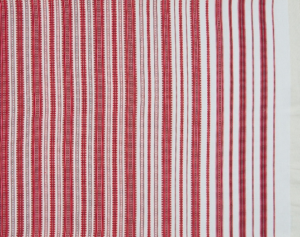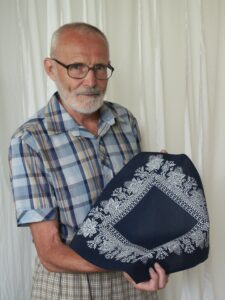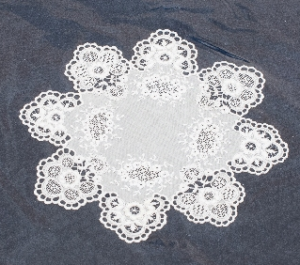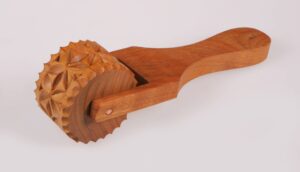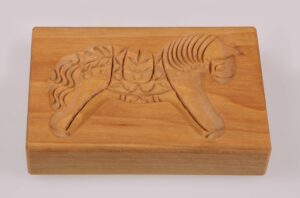Frantisek Joch
Frantisek Johch was born in Straznice in a dyer’s family. His grandfather and father along with their wives printed and dyed the linen at their home workshopthat – as one of the three workshops in Moravia – worked until 1951 when its closing was forced. Later the workshop became a part of the district plant in the town of Uherské Hradiste. Father Frantisek Joch senior was in charge with .leading the workshop where Frantisek Joch jr. spent his apprenticeship and earned the craft rom his father. After his father”s death Frantisek jr. became the workshop manager.
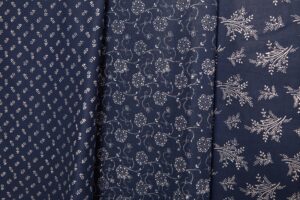
The patterns on the older moulds are mostly carved into hard pear timber. Later on the carving was completed by finer motifs consisting of various rivets, metal strips and nails. The motifs on the youngest moulds are made just of brass strips, without woodcarving elements.
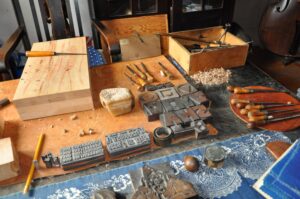
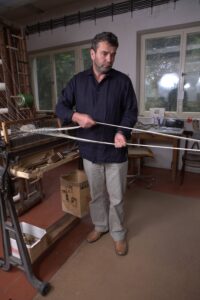
Zdeněk Kubák was born in the village of Počátky as the fourth son in the generation o fweavers from Strmilov. His great-grandfather, grandfather and father worked in the home weaver’s workshop that was administrated by the Centre for Folk Art Manufacture since the 1950s.
In the workshop, he was learning all the production parts systematically – beginning from the yarn preparation through the warping up to the weaving on large mechanical looms. He did not miss even designing and technical processing of the new models. He made a rich use of all the aformentioned experience when he reinstituted the workshop and began to run it along with her sister.
In the past, the entire voluminous production of wool and decorative fabrics was manufactured in Kubák’s workshop in the village of Strmilov. The contemporary assortment continues this tradtion completely and with respect to the customers’ inquiry, the workshop manufactures plenty of wool bedspreads andstoles, cotton blankets, teacloths and table-cloths. The uniqueness in determined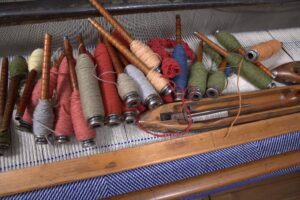
The weaving runs on large mechanical jacquard looms that are technical monuments in themselves. Because of their excellent condition, it is possible to weave a wide range of patterns and waves on them, as requested by particular designs.
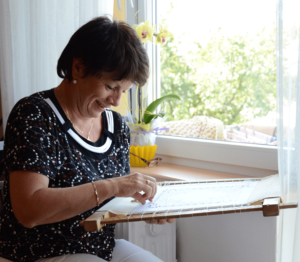
Marie Pyrchalová is a creator of the locally famous whitework embroidery from the village of Zubří. Her grandmother, Ludmila Juřčová was also a famous embroiderer. She started getting interested in this technique in 1984, and has been leading independent courses since 2000, in which hundreds of people have taken part.
The whitework embroidery from the villlage of Zubří („zuberská” embroidery) was traditionally applied on folk garments, such as blouses, bonnets, and handkerchiefs, as well as home textiles and fashion accessories which were exported to Vienna in the early 20th century.
The zuberská embroidery works with a plenty of patterns whose aesthetical effect is based on the alteration of light and shadow which can be reached by cutting and drawing the threads from the warp.

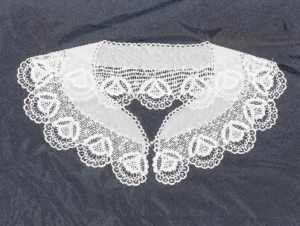
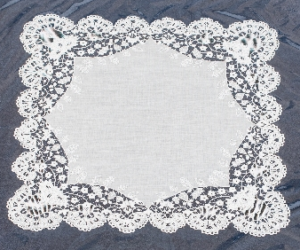
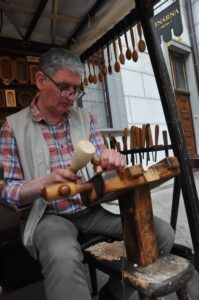
Alexandr Slavík lives in Krumvir, where he works in a family workshop which produces moulds for gingerbread, cheeses and butters. Several generaions of his forefathers, who came from Wallachia dealt with woodcarving.
Marcela and Frantisek Slaviks, Alexander Slavik’s parents are excellent woodcarvers too. Alexandr makes food moulds from well-dried hardwood e.g. pear, plum or walnut. When producing gingerbread moulds, the woodcarver uses quite thin boards, as the carved relief is about 1,5 cm deep; for butter and cheese moulds he uses thicker boards, because the mould is up to 4 cm deep. Mr Slavík chooses the decorative motives based on historical models, bringing his own creativity into them. He works with small chisels and styli of diverse profiles which allow him to work with precision and exactness acquired over any years of experience The finish moulds are then painted with flax oil. Currently Alexander makes thirty different types of food moulds.
Alexander passes his handicraft on his family members as his two daughters participate in running the workshop.
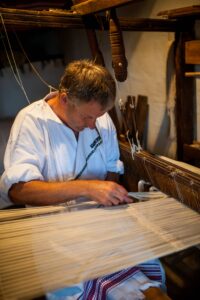
Miroslav Urban was born into a weavers’ family. Indeed the village from which he is was famous for skilled weavers in the past – similar to the neighbouring villages of Kuželov and Hrubá Vrbka. His grandfather František Urban was one of the local weavers, who devoted himself to the craft for all his life. Similar to the other weavers fro the region, he mainly made hemp canvas.
The weavers in the ethno-graphic area of Horňacko produced coearse acanvas and fine linen in linen or twill weave. The fabrics were used for making folk garments – men and women’s shirts, men’s aprons, canvas pants called třaslavice, women’s underskirts called rubáč, scarves, four-ell shawls, different home and bedroom textiles – tablecloths, bed sheets, corner sheets, pillowcases, and decorative towels. In addition to traditional canvas, they also wove činováť – woven patterned fabrics. This type of weaving using a tablet is widespread in the whole of Eastern Europe and the Balkans, but it can be documented solely in Horňacko in our lands.
